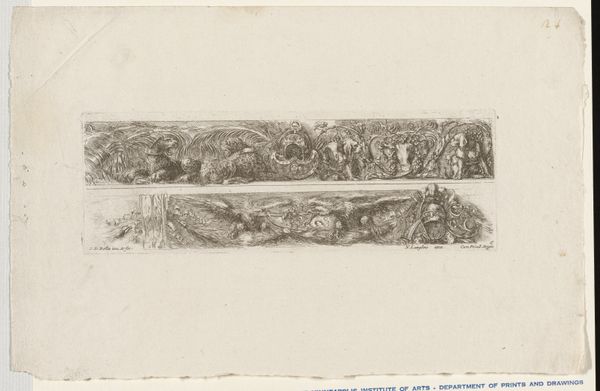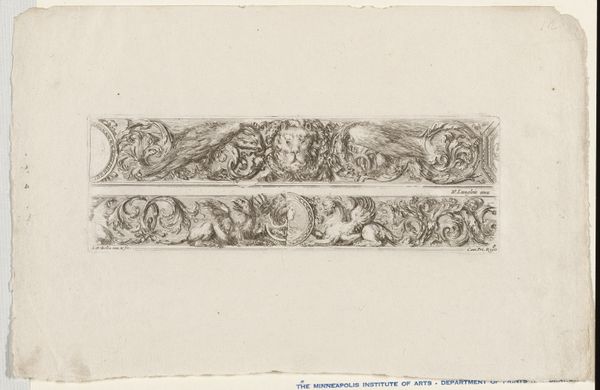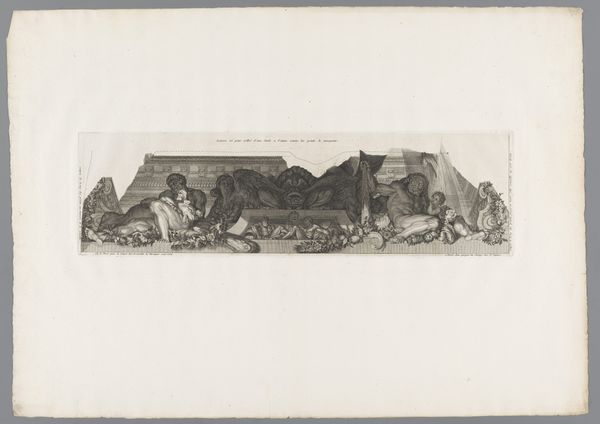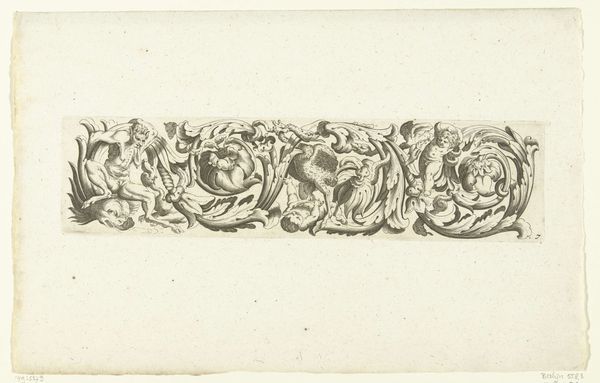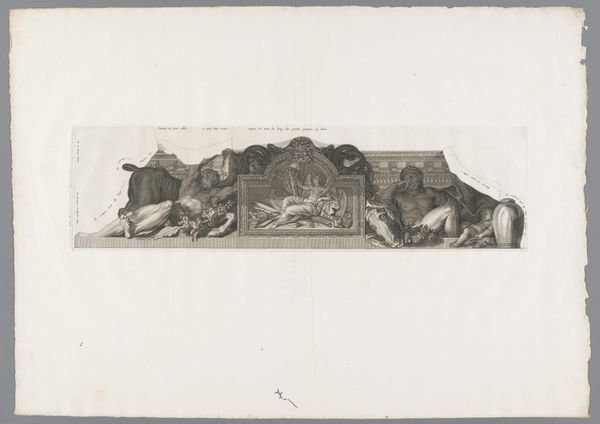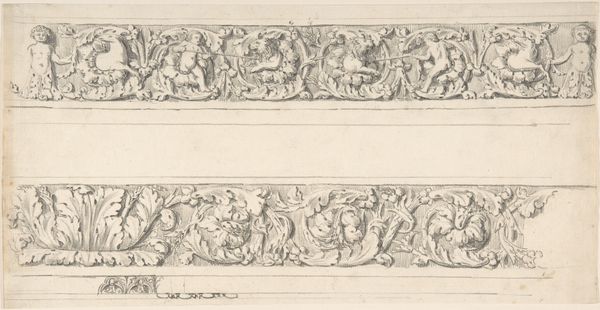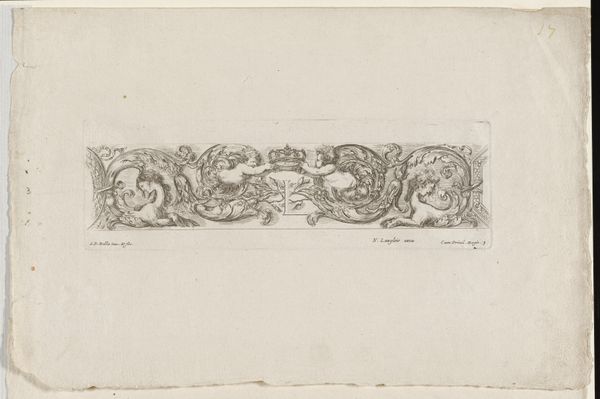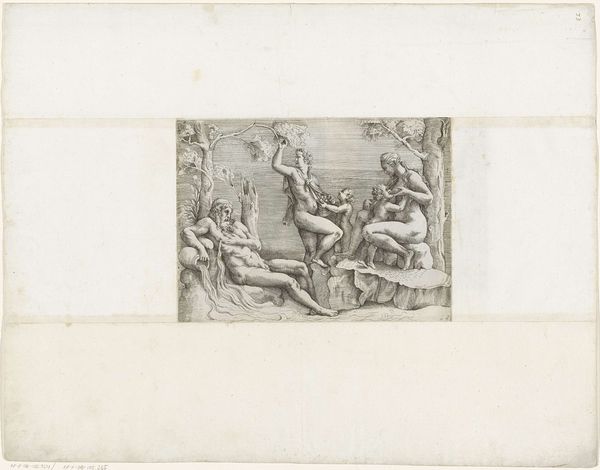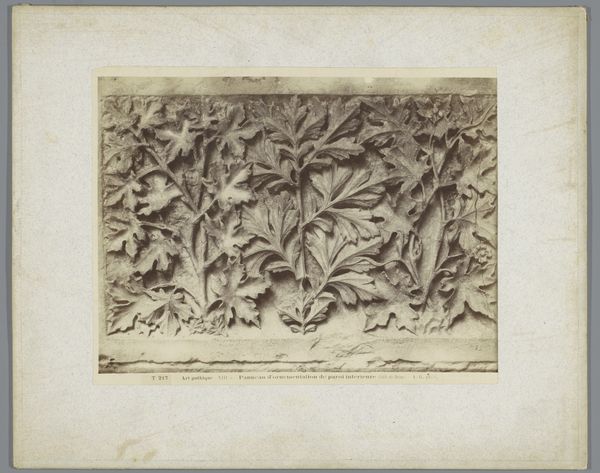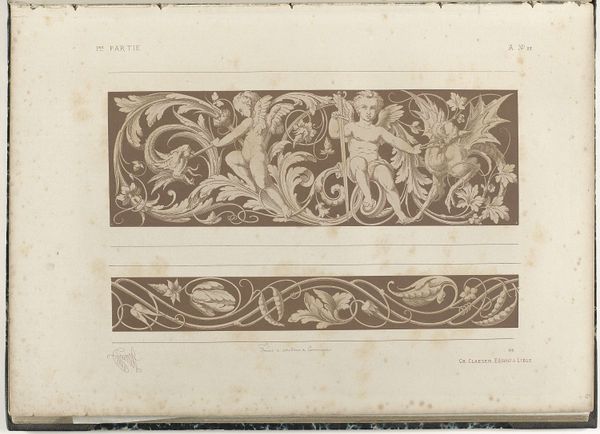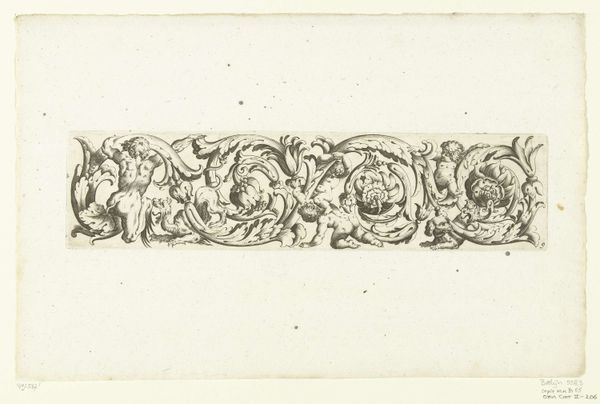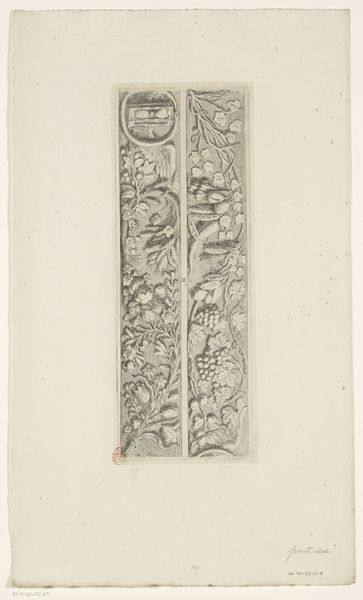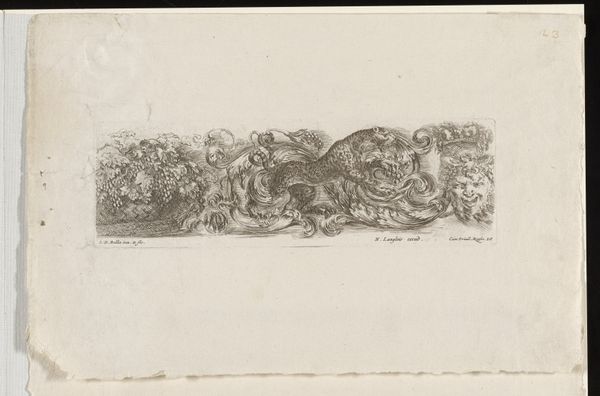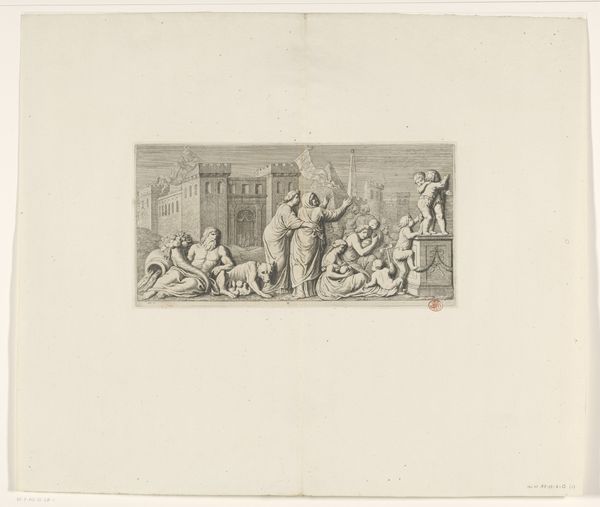
print, etching, engraving
#
amateur sketch
#
toned paper
# print
#
etching
#
pencil sketch
#
incomplete sketchy
#
personal sketchbook
#
ink drawing experimentation
#
pen-ink sketch
#
sketchbook drawing
#
italy
#
sketchbook art
#
engraving
#
watercolor
Dimensions: 2 3/4 x 9 1/2 in. (6.99 x 24.13 cm) (image)8 3/4 x 13 3/8 in. (22.23 x 33.97 cm) (sheet)
Copyright: Public Domain
Editor: This is "Plate 9," an etching by Stefano della Bella, created around the 17th century. It feels very classical in its subject matter, like something you'd see on a frieze. What strikes me most is the artist’s command of line; how does one even begin to interpret the composition of this engraving? Curator: The composition hinges on a sophisticated manipulation of form and space. Note the horizontal format, segmented into registers, echoing classical relief sculpture, a point you rightly observed. Della Bella uses the linear quality of etching to create both detail and depth. The primary register, populated by figures in dynamic motion, contrasts with the register below populated with static animal forms, does it not? Editor: I see the division. There's a real tension between movement and stillness across those two registers, the figures in the top panel versus the reclining creatures below. It gives the piece a unique rhythm. Curator: Precisely. This interplay generates a visual cadence. Observe also the use of negative space. Della Bella skillfully uses the white of the paper, that toned paper you referenced, to define forms, adding dimension, but equally as an activation of plane, as foreground and background compete, wouldn’t you say? Editor: So the 'empty' space is as crucial as the lines themselves in creating the overall effect. Is there anything particularly interesting about the symmetry, or lack thereof? Curator: Ah, the symmetry is a deliberate choice to avoid monotony. A strict symmetrical arrangement might flatten the image, while the asymmetry, subtle though it is, infuses energy and contributes to a more visually dynamic, if eccentric, presentation, giving life to the composition, no? Editor: That makes a lot of sense. I hadn't considered the dynamic aspect of asymmetry here. Thank you for helping me see it with fresh eyes. Curator: The pleasure was mine. Approaching artworks from the sole point of formal structure always presents novel vantage points.
Comments
No comments
Be the first to comment and join the conversation on the ultimate creative platform.
